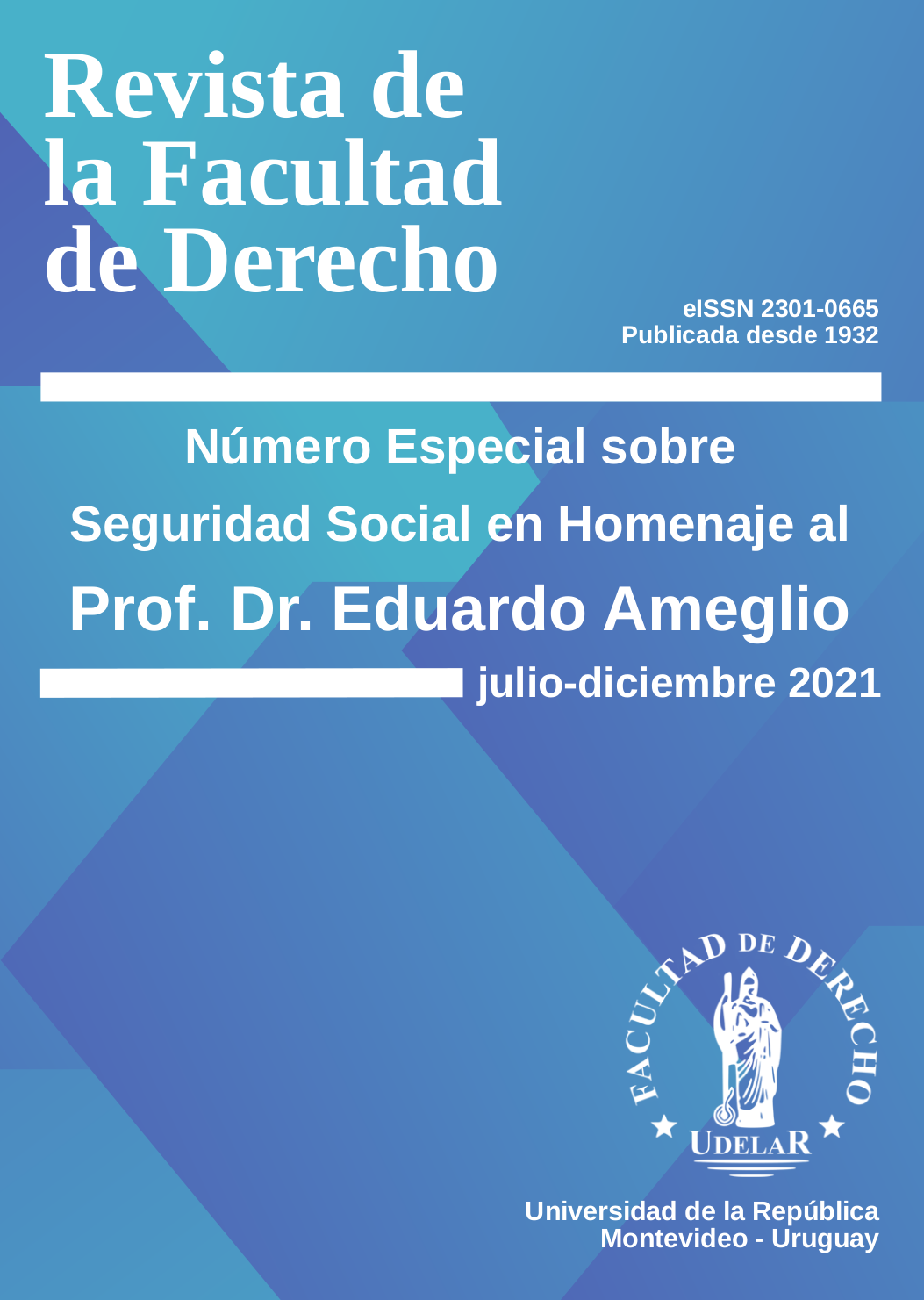La Social security and its reforming dynamism from a gender perspective: the right to social benefits that correct inequity
Abstract
Across the world, social security systems have a number of deep gender-based social protection gaps. Women find it more difficult to access contributory social security benefits, in addition, their amounts are much lower than those of men. One part of the causes is associated with inequalities in the labor markets (sexist segregation of employment), as well as the greater role of women in the work of caring for family members, without salary. Institutional factors also play a role in perpetuating gender gaps in social protection. In some European countries, such as Spain, very recent legal reforms have been carried out to try to correct these gender gaps in social security. This study analyzes the aspects of innovation and the difficulties ("thorns") that have arisen in this improvement path in favor of real gender equity in social protection.
Downloads
References
Alaminos, E. (2018). La brecha de género en las pensiones contributivas de la población mayor española. En Panorama Social, (27) , 53-62.
Aguirre, R. y Scuro Somma, L. (2010). Panorama del sistema previsional y género en Uruguay. Avances y desafíos. [Recurso electrónico]. Recuperado de https://repositorio.cepal.org/bitstream/handle/11362/5824/6/S1000062_es.pdf
Bertranou, E. (2008). Tendencias demográficas y protección social en América Latina y el Caribe. (Serie Población y Desarrollo n.º 82). Santiago de Chile, Comisión Económica para América Latina y el Caribe.
Burkevica, I., Humbert, A., Oetke, N., Paats, M. (2015). Gender Gap in Pensions in the EU: Research Note to the Latvian Presidency. Vilnius: The European Institute for Gender Equality.
De La Flor Fernández, María Luisa (2016). Reflexiones en torno a la pensión de jubilación desde una óptica de género: el nuevo complemento por maternidad. Revista de Derecho Social (76), octubre-diciembre.
Grimshaw, D. -Rubery, J. (2015). The motherhood pay gap: a review of the issues, theory and international evidence. (Working Paper, n° 1). International Labor Office
Molina Navarrete, C. (2020). La doctrina jurisprudencial por discriminación de género en el orden social. Madrid: La Ley.
Monereo Pérez, J.L., Molina Navarrete, C., Quesada Segura, R., Moreno Vida, M. N., Maldonado Molina, J.A. (2021). Manual de Seguridad Social. Madrid: Tecnos.
Monereo Perez, J.L. -Fernández Bernat, J.A. (2013). El factor de sostenibilidad en España: ¿Un nuevo paso para el cambio silencioso del sistema de pensiones? Revista de Derecho Social, (62), 209-237.
ILO (2018). World Employment and Social Outlook: Trends for Women 2018 -Global snapshot. Geneve: International Labor Office.
ILO (2016). Women at Work: Trends 2016. Geneve. International Labor Office.
ILO (2019). World Social Protection Report 2017–19: Universal social protection to achieve the Sustainable Development Goals. Geneve. International Labor Office.
OIT (2005). Replanteamiento de la seguridad social: la reforma de las pensiones en América Latina. [Recurso electrónico]. Recuperado de https://www.ilo.org/global/about-the-ilo/mission-and-objectives/features/WCMS_075292/lang--es/index.htm
OIT (2020). Cumplimientos de los principios de seguridad Social. Equidad de género. En OIT. Los principios de la seguridad social y la reforma de las pensiones en Colombia. pp.12-13. [Recurso electrónico]. Recuperado de https://www.ilo.org/wcmsp5/groups/public/---americas/---ro-lima/---sro-lima/documents/publication/wcms_765063.pdf
Olsen, F. (2000). El sexo del derecho. Identidad femenina y discurso jurídico, 25-43.
Copyright (c) 2021 Cristóbal Molina Navarrete

This work is licensed under a Creative Commons Attribution 4.0 International License.
This journal provides open access to its content, based on the principle that providing the public with free access to research helps a greater global exchange of knowledge
Revista de la Facultad de Derecho. Creative Commons Reconocimiento 4.0 Internacional License.










